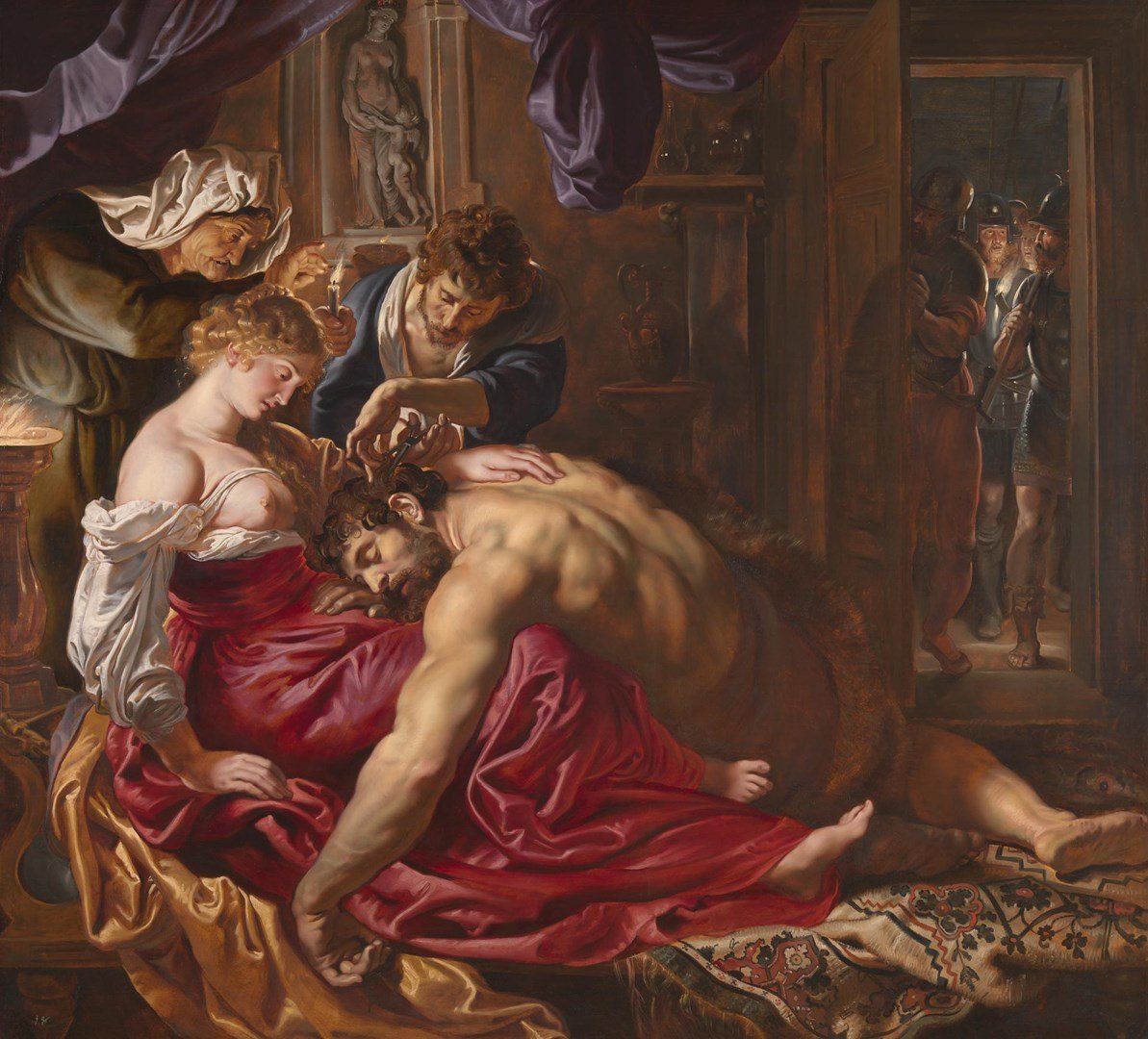
A series of tests using artificial intelligence have found that the Peter Paul Rubens masterpiece Samson and Delilah (ca. 1609/10) at the National Gallery in London is most likely a fake.
After comparing the work against 148 uncontested Rubens paintings, the algorithm came to the “astonishing” conclusion that there was a 91 percent chance that the it was inauthentic.
The A.I. was powered by a “convolutional neural network” that analyzed brushstroke patterns and other aspects of Rubens’s known work and compared them to the National Gallery painting, the authorship of which has long been the subject of controversy.
“I was so shocked,” Carina Popovici, a scientist who cofounded the Swiss firm Art Recognition, which conducted the study, told the Guardian. “We repeated the experiments to be really sure that we were not making a mistake, and the result was always the same. Every patch, every single square, came out as fake, with more than 90 percent probability.”
The result lends credence to scholars who have doubted the work’s authenticity since the institution acquired it for £2.5 million ($5.4 million) in 1980. At the time, it was the third-most expensive work of art ever sold, according to the New York Times.
Frans Francken the Younger, Supper at the House of Burgomaster Rockox (ca. 1630–1635). The painting shows Peter Paul Rubens’s Samson and Delilah. Because Francken included Samson’s full foot, some people believe that the National Gallery in London’s painting of the same name, which crops out his toes, must be a copy. Collection of the Alte Pinakothek, Munich, Germany.
But the painting crops Samson’s toes—which appear in full in two 17th-century copies, a Jacob Matham engraving and a Frans Francken the Younger painting that shows the work on display in the home of its original owner. Detractors claim the truncated composition in the National Gallery picture proves the work to be a copy of a lost original.
Concerns about the work made headlines in 2005, when the National Gallery staged a blockbuster survey of the artist’s work, “Rubens: A Master in the Making.” (The show omitted both contemporary copies of the painting.)
“When I first saw the National Gallery’s Samson and Delilah in 1987, immediately I thought it could not have been painted by Rubens and I supposed that it was a copy—a 20th century copy,” artist and independent scholar Euphrosyne Doxiadis told Spiegel International at the time. (She had submitted a report with her concerns to the museum in 1992, and still maintains an entire website dedicated to debunking the picture.)
Samson and Delilah skeptics also question the painting’s quality, as well as its style and color palette—though the museum claims the work represents a period of experimentation for Rubens. His best-known work from the same period, The Raising of the Cross, bears the more-familiar hallmarks of his style.
Peter Paul Rubens, The Raising of the Cross (ca. 1610/11). Collection of Onze Lieve Vrouwe-Kerk, Antwerp.
Even more damning is the painting’s provenance from the 20th century. A city official in Antwerp named Nicolaas Rockox was said to have commissioned the painting around 1609, after Rubens returned to the country following an eight-year stint in Italy. It disappeared following Rockox’s death in 1640.
When the work resurfaced in Paris in 1929, it was attributed to Gerrit van Honthorst. Then, Ludwig Burchard, an expert on Rubens, signed a certificate of authenticity attesting to his authorship. When Burchard died in 1960, it came to light that he had falsely authenticated work for his own commercial benefit.
“Over 60 Burchard Rubens attributions… ha[ve] subsequently been demoted in the Corpus Rubenianum itself,” according to ArtWatch UK, which has been following the Samson and Delilah saga for years.
Despite the controversy, the National Gallery continues to stand behind the work, and still features it as one of the 30 highlights in the museum’s collection.
“The gallery always takes note of new research,” the museum told the Guardian. “We await its publication in full so that any evidence can be properly assessed. Until such time, it will not be possible to comment further.”
Another Rubens work in the museum collection, A View of Het Steen in the Early Morning, fared better under the A.I. analysis, which found there was a 98.8 percent chance it was actually done by the artist.